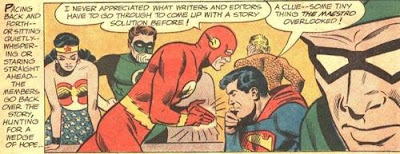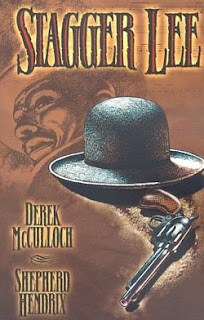It’s one of the most highly-structured and demanding pieces of work I’ve done and brings to fruition a lot of long-time obsessions, I suppose. It’s my Monitor-vision, high-altitude view of the DCU as an entity; before I take a long-awaited break to do some other work. It’s my sci-fi/horror version of everything I love about DC, everything I ever thought or felt about DC, in one book. It’s about the confusion and excitement of getting into this wild, colourful fictional continuum as a kid, and it’s an attempt to define what makes DC unique and vibrant in relation to other superhero universes. It also offers a full cosmology of higher dimensions, including our own, and an insight into the creative impulse of God, so it’s well worth the cover price, I like to think. It’s filled with interesting and life-changing occult and philosophical secrets too and the more you read it, the more you’ll pick up on them.
It’s also a deliberate attempt to show how so-called ‘rules’ can be broken to create different kinds of effects in our comics. It’s a way of using superhero comics to talk about the ‘real’ world that doesn’t rely on news headlines, mock-‘relevance’ or ‘adult’ language and imagery.
I found myself wondering what it would be like if comics’ storytelling stopped aping film or TV and tried a few tricks from opera, for instance. How about dense, allusive, hermetic comics that read more like poetry than prose? How about comics loaded with multiple, prismatic meanings and possibilities? Comics composed like music? In a marketplace dominated by ‘left brain’ books, I thought it might be refreshing to offer an unashamedly ‘right brain’ alternative.
Just as Marvel Boy in 1999 foreshadowed the storytelling trends of this last decade, Final Crisis is an attempt to predict how ‘channel-zapping’ techniques might develop as the Fifth World of the Information Age of Obama gets underway and begins to define itself in opposition to the previous generation’s ‘rules’.
It’s all of the above. I was trying to distil everything I love about superhero comics into this loaded, condensed...artefact, which meant using all the lessons I’ve learned in a lifetime’s writing for a living.
That about sums up how I feel about the book: full of really awesome, mind-boggling potential, but confusing as hell. Though there are hints and glimmers of crazy coolness throughout, I don't think he quite achieved what he was aiming for. I'll withhold final judgment, though, until the collection comes out and I give it another read.










